home | internet service | web design | business directory | bulletin board | advertise | events calendar | contact | weather | cams

|
KROOT down but not out 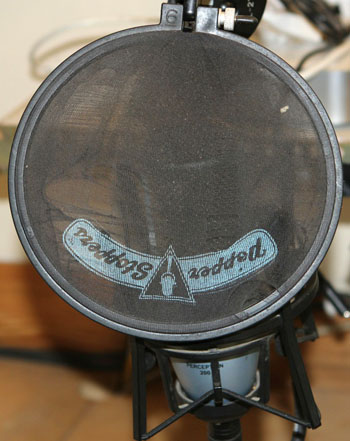 KTRT's microphone is off the air. KTRT's microphone is off the air.KROOT radio, which has been off the air for most of the last three weeks due to equipment failure, will shortly be making big changes that will see the station move from Winthrop to Twisp. By mid-month KROOT—KTRT at 97.5 FM—with its independent-minded musical programming, dee-jays and program hosts will be back on the air and broadcasting from TwispWorks, according to general manager Don Ashford. In an effort to keep broadcasting when the system failed, Ashford taped two weeks worth of programming and took a computer up to a transmission shed on McClure Mountain and plugged it directly into the transmitter there, he said, and then controlled it from a remote monitor at the studio. But after a few days, that system also crashed. The move from the station’s present location above Ashford’s pottery studio and his wife, Sara’s, weaving and spinning studio on Highway 20 between Mazama and Winthrop to TwispWorks was triggered by the collapse of an unorthodox signal-streaming solution devised by Ashford’s late son, Dov. Dov figured out a way to jury-rig a system that converted analog signals into internet protocols that could be streamed from the studio up to the McClure Mountain transmission tower via Methownet.com’s internet radio transmission system. Dov’s solution had kept the station on the air from its inception in 2006; he died in 2010 at the age of 29. But the equipment has finally worn out, said Ashford, 63, who said of his own efforts to keep KROOT going: “I do it because of Dov.” The equipment breakdown is spurring long-needed technological and equipment improvements at KROOT. “It’s the silver lining in the cloud,” he told Grist. 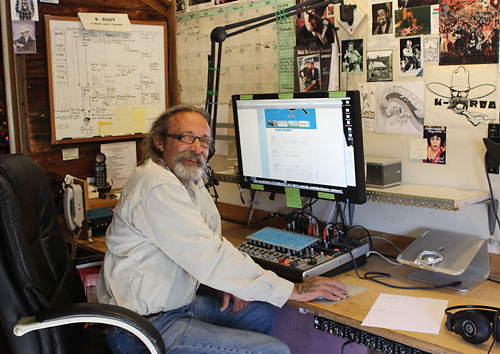 Don Ashford's KROOT radio will soon move from the old studio. Photo by Solveig Torvik Don Ashford's KROOT radio will soon move from the old studio. Photo by Solveig TorvikThe station is faced with having to invest in a new microwave system to get its signals to McClure. That requires a clear line of sight to McClure, said Ashford. “We have to be in Twisp.” And the equipment on McClure must be replaced before it snows, he added. As part of the move, Ashford is rolling out a “Give a Hoot to Grow the Root” campaign to raise $20,550 for the new transmission equipment, software and computers. Listeners are asked to pay $97.50 to become station members. Aside from getting the station back on the air, members will get some perks and prizes, said Ashford - a rebuilt Schwinn tandem bike from Methow Cycle and Sports and an original oil painting by Rod Weigant - are among items to be on offer in a drawing for members. A well-regarded potter who graduated from high school in Spokane and from Central Washington State University in Ellensburg with a degree in art, Ashford says he never envisioned himself in the radio business. So fearful of public speaking in school that he plotted how to avoid teachers who required oral book reports, “I was afraid to speak,” he told Grist. 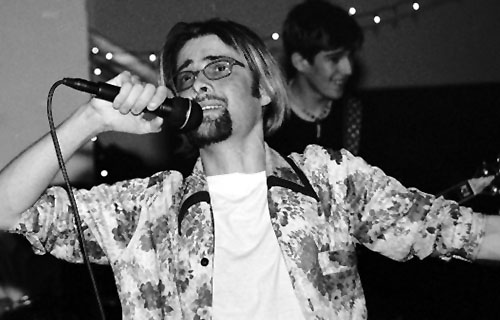 Dov Ashford's unorthodox system for getting KTRT on the air ran for seven years. Photo courtesy Don Ashford Dov Ashford's unorthodox system for getting KTRT on the air ran for seven years. Photo courtesy Don AshfordEventually he and his family ended up in Seattle, where he worked for both the Washington State Arts Commission and the Seattle Arts Commission as a potter taking the arts into the schools. After a stint dredging for gold in a remote Oregon location and training Appaloosa horses, he and the family decided it was time to return to Washington. They had friends in Winthrop and picked it, sight unseen. They arrived in 1987 with a horse trailer filled with six horses, plus two other trailers and three trucks. And he set to work on his pottery again. Ashford didn’t discover an affinity for broadcasting until one day in 1993 when he was asked by his friend “Cowboy George” at KVLR in Twisp to sit in for him for a couple of weeks while he was gone. Despite his reluctance, Ashford somehow made a go of it and says he taped himself on the air and practiced to improve his performance. He worked on and off at the station, eventually becoming its music director, until it was sold. 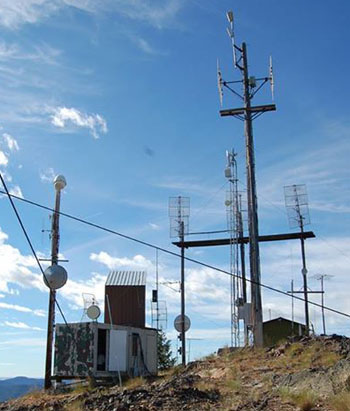 The KROOT transmission shed is on McClure Mountain above Twisp. Photo courtesy KROOT The KROOT transmission shed is on McClure Mountain above Twisp. Photo courtesy KROOTWhen his dad left KVLR, Dov—“who loved radio and was super smart about computers”—told him: “Dad, you can start your own radio station.” Dov had been diagnosed with acute myeloid lukemia at the age of 12 and had been given a bone marrow transplant. But by the time he was in his twenties, Dov was so compromised with related health problems that his parents saw a radio station as a solution for him. “This is something he could do,” they told themselves, as Ashford recalled. Ashford and Rick Mills prepared the engineering and design work required for obtaining a new Federal Communications Commission broadcast license, expecting it to cost between $4,000 to $6,000, Ashford said. However, the FCC makes all such privately-prepared information available to all bidders in any general auction for broadcasting licenses, and the bidding lasts for two weeks. Unexpectedly they found themselves competing with big firms with deep pockets, he said. “We blew past the money we had saved the first day,” Ashford recalled. He called for help from the community of potential listeners and got it. “Paul Butler said:`I’ll cover your shortfall up to $100 grand,’” Ashford recalled. The station’s licensing ended up costing $214,000, said Ashford, and since the money to buy it came from loans, KROOT started with roughly $200,000 worth of debt. And that was before acquiring $45,000 worth of equipment. “For that we sold stock, so we have a small number of stockholders,” he told Grist. The station is owned by Tin Can Communications, LLC. 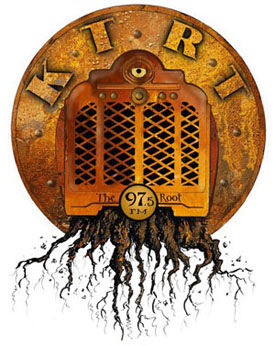 KROOT's logo reflects its eclectic programming. Image courtesy KROOT KROOT's logo reflects its eclectic programming. Image courtesy KROOTKROOT’s broadcasting program, which includes an eclectic mix of blues, rockabilly, cowboy tunes and popular oldies can be found in the station’s website, www.radioroot.com. It has 19 people on its roster of volunteers who keep it on the air; typically nine of them are involved on an ongoing basis, and Ashford said he figures about 500 listeners are tuned in at any given time. Its signals reach as far as Okanogan and the Tonasket Highlands and even to the Beebe Bridge near Chelan. Sometimes KROOT can be picked up at Spokane’s Airway Heights, said Ashford, who goes by the on-air moniker “Deputy Don.” He has not given up on adding internet streaming technology that would take KROOT out of the valley and let the world eavesdrop on what’s happening here, Ashford said. “I don’t think it would change the programming at all,” he added, noting that he sees the station as both an art project and as a community-builder. Lots of good things are happening in this valley that other communities may wish to emulate, said Ashford. “I think other people might like to overhear that. I’d like people to know that this could happen in your community.” 9/11/2013
Comments
|
